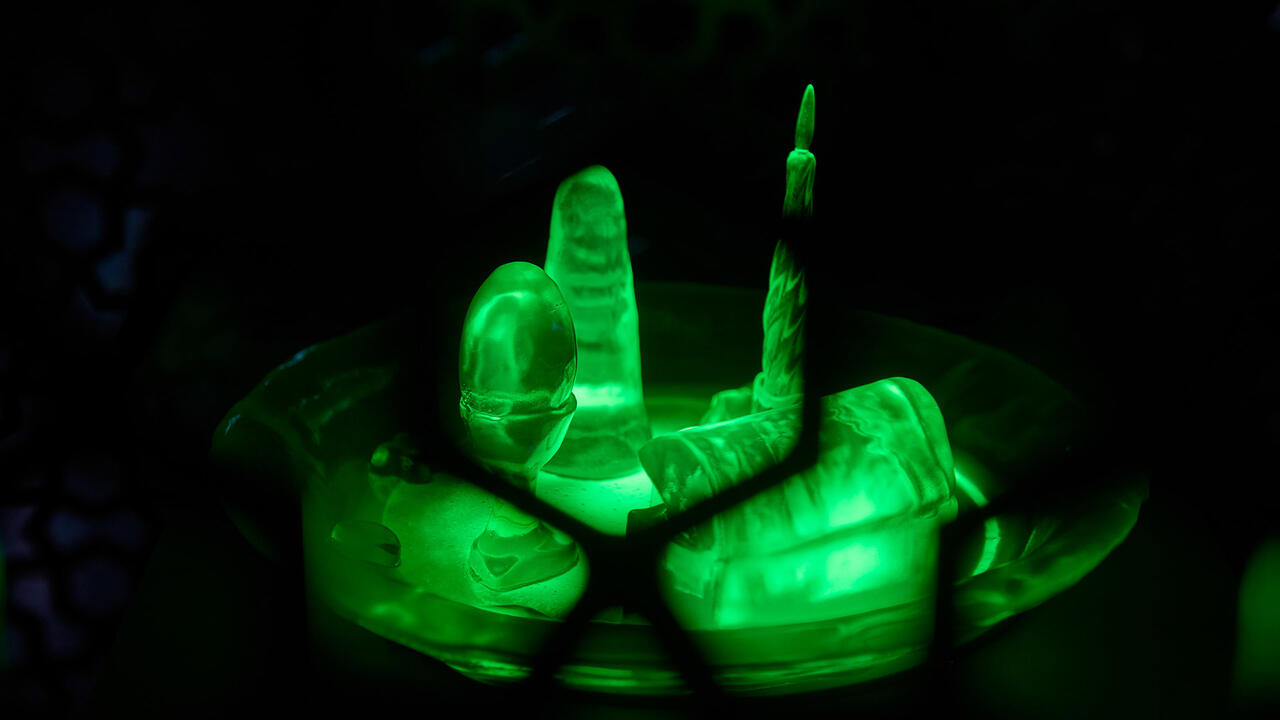Michael Craig-Martin’s Ode to the Ordinary
In a packed retrospective at the Royal Academy of Arts, London, the artist’s depictions of everyday objects take centre stage
In a packed retrospective at the Royal Academy of Arts, London, the artist’s depictions of everyday objects take centre stage

It is more than half a century since Michael Craig-Martin premiered An Oak Tree (1973) at the Rowan Gallery in Mayfair – a short walk from the institution hosting this well-stocked retrospective of almost 150 works. An Oak Tree comprises a solitary glass of water perched on a shelf accompanied by a lengthy text, in faux-interview form, explaining how the artist has changed a glass of water into a full-grown oak tree ‘without altering the accidents of the glass of water’. It is a landmark work, though not quite canonical: unveiled a year later than, and an ocean away from, the bulk of the activity charted in Lucy Lippard’s canon-forming Six Years: The Dematerialization of the Art Object from 1966 to 1972 (1973), An Oak Tree’s suggestion of transubstantiation has a whiff of Craig-Martin’s childhood Catholicism that is at odds with mainstream New York conceptualism.

The work is presented here alongside several earlier pieces, starting with Black Book (1967) – a modest tabletop sculpture made of cardboard and tape, whose form anticipates the more substantial series of floor-based ‘box sculptures’ that occupied the artist for the following two years. These hinged containers in painted plywood are akin to works by Craig-Martin’s American peers, such as Donald Judd and Sol LeWitt, sharing a mid-1960s concern with minimalist non-composition and seriality. There’s a characteristic twist of mischievous wit to Craig-Martin’s boxes, however, their wonky utility reflected in titles such as Box that Never Closes (1967).
The Craig-Martin familiar to us now as an impresario of eye-popping images of commonplace objects, came into his own in the late 1970s. Duly predominant in this retrospective are the artist’s signature, large-scale wall drawings executed in adhesive tape (generally black against white walls) and paintings depicting instantly recognizable everyday objects in simple outline against grounds of high-keyed colour. While others might produce work that is implicitly critical of the modern world’s forest of signs and obsession with consumer goods, Craig-Martin’s response is more of an extravagant – and ongoing – ode to the ordinary. In a packed presentation, requisite breathing space is given to the wall drawings, including the early Reading with Globe (1980), featuring a disparate cluster of familiar objects – lightbulb, ice-cube tray, stepladder – but foregrounding an open book and centring on a desk-globe.

Craig-Martin has been admirably reluctant to rest on his laurels, with evidence from across his career showing a restless artistic mind at play. Some bodies of his work click perfectly into self-sufficient place, such as a late-1980s suite of monochrome ‘paintings’ composed of venetian blinds (e.g. Untitled (Red), 1988), which comment slyly on what can be revealed or obscured by contemporary abstraction. Other works, including a brief foray into neon, seem decidedly transitional, but are no less interesting for that.
Closing the exhibition are two crowd-pleasing galleries, in which the octogenarian artist explores novel technology with undiminished gusto. The first takes a shot at medium-of-the-moment immersive installation with Cosmos (2024). The second engages with the time-honoured genre of portraiture, although this roomful of computer-animated likenesses of disparate luminaries (George Michael, Zaha Hadid, the Duke of Wellington), constantly morphing screensaver-style, is more literally than figuratively moving.

Particularly effective, however, is a gathering in the Royal Academy’s courtyard of recent freestanding sculptures in powder-coated steel, including Umbrella (magenta) (2024). Resembling scaled-up pencil sketches made of thin, twisted metal, the natural habitat of these outsize works may be the sculpture park or stately home, but their placement here as bookends of a replete retrospective is exquisitely emblematic. As one walks past them, these 2D works momentarily shrink from view into a thin blade of vivid colour, before gradually re-emerging in hindsight.
‘Michael Craig-Martin’ is on view at the Royal Academy of Arts, London, until 10 December
Main image: Michael Craig-Martin, Common History: Conference, 1999, acrylic on aluminium, 2.7 × 5.1 m. Courtesy: © Michael Craig-Martin and Gagosian



















